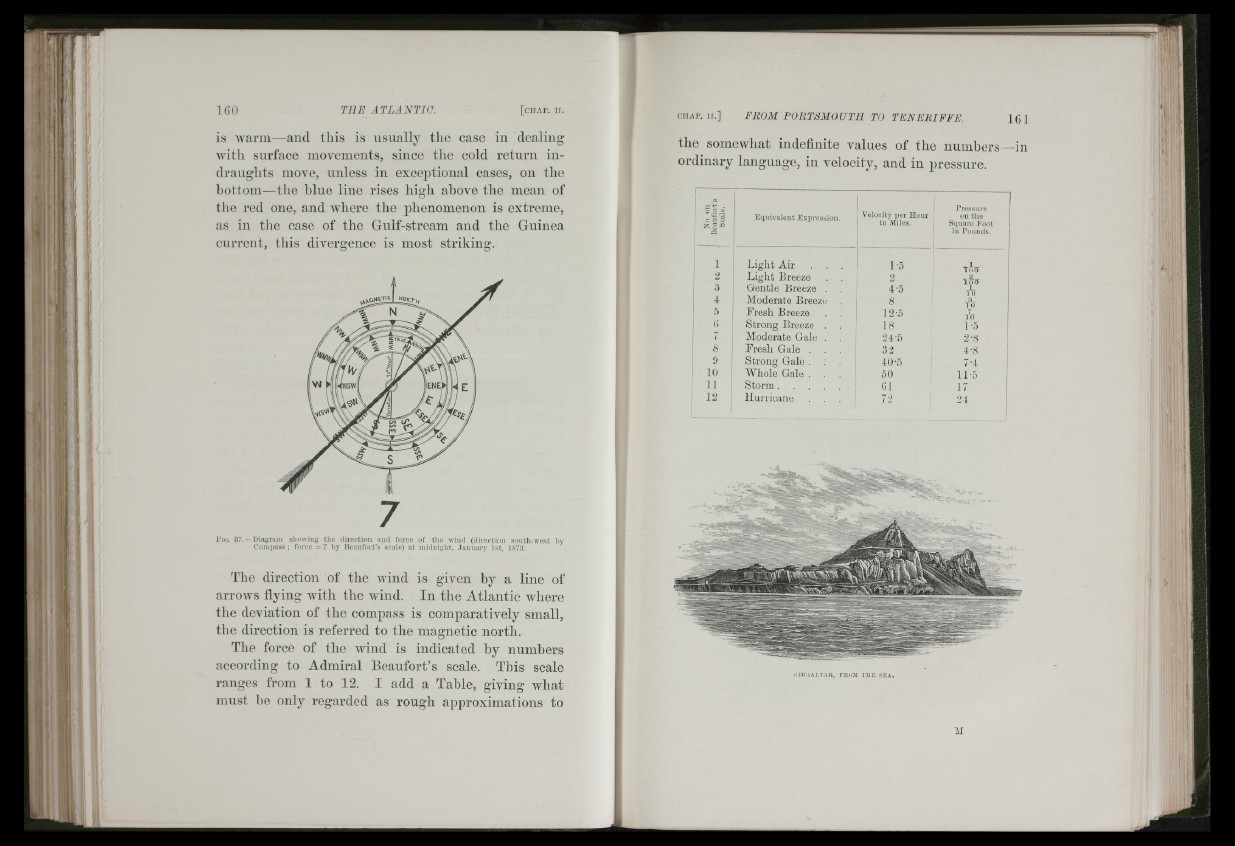
i :■ ; i. ;
( ' I
'■ J t ' i;
is warm—and this is usually the case in dealing
Avitli surface movements, since the cold return indraughts
move, unless in exceptional cases, on the
bottom—tlie blue line rises high above the mean of
the red one, and Avliere the phenomenon is extreme,
as in tlie case of the Gulf-stream and the Guinea
current, this divergence is most striking.
I'ic.. 3 7 .- Diagram allowing the (Hreetinn ami force of th e wind (diiectioii sonth-west hy
Compass ; force = 7 hy Be.aufort’s scale) a t midnight, .Januaiy 1st, 187.3.
The direction of the wind is given by a line of
arrows flying Avith the wind. In the Atlantic where
tbe deviation of the compass is comparatively small,
tlie direction is referred to the magnetic north.
The force of the Avind is indicated by numbers
according to Admiral Beaufort’s scale. Tbis scale
ranges from 1 to 12. I add a Table, giving what
must lie only regarded as rough approximations to
CHAP. I I .] F R O M F O R T S M O U T H T O T E N E R I F F E . 161
the somewhat indefinite values of the numbers —in
ordinary language, in velocity, and in pressure.
0 3«
£3
Equivalent Expression.
1 i Light Air
2 Light Breeze
.3 Gentle Breeze .
4 Moderate Breeze
5 Fresh Breeze
6 Strong Breeze .
7 Moderate Gale .
S Fresh Gale .
9 Strong Gale . .
10 Whole Gale .
11 Storm. . . .
12 Huriioane
1
Velocity per Hour
in Miles. i
I
Pressure
on the
Sqimre Foot
in Pounds.
1-5 TOTT 2 2
1 ()0
4-5 f(7
8 MT
12-5 I d
18 1-5
24'.5 2-8
32 4-8
40-5 7-4
50 11-5
61 17
72 24
(lin;iAT,T.AH, FROM TIlK SEA.